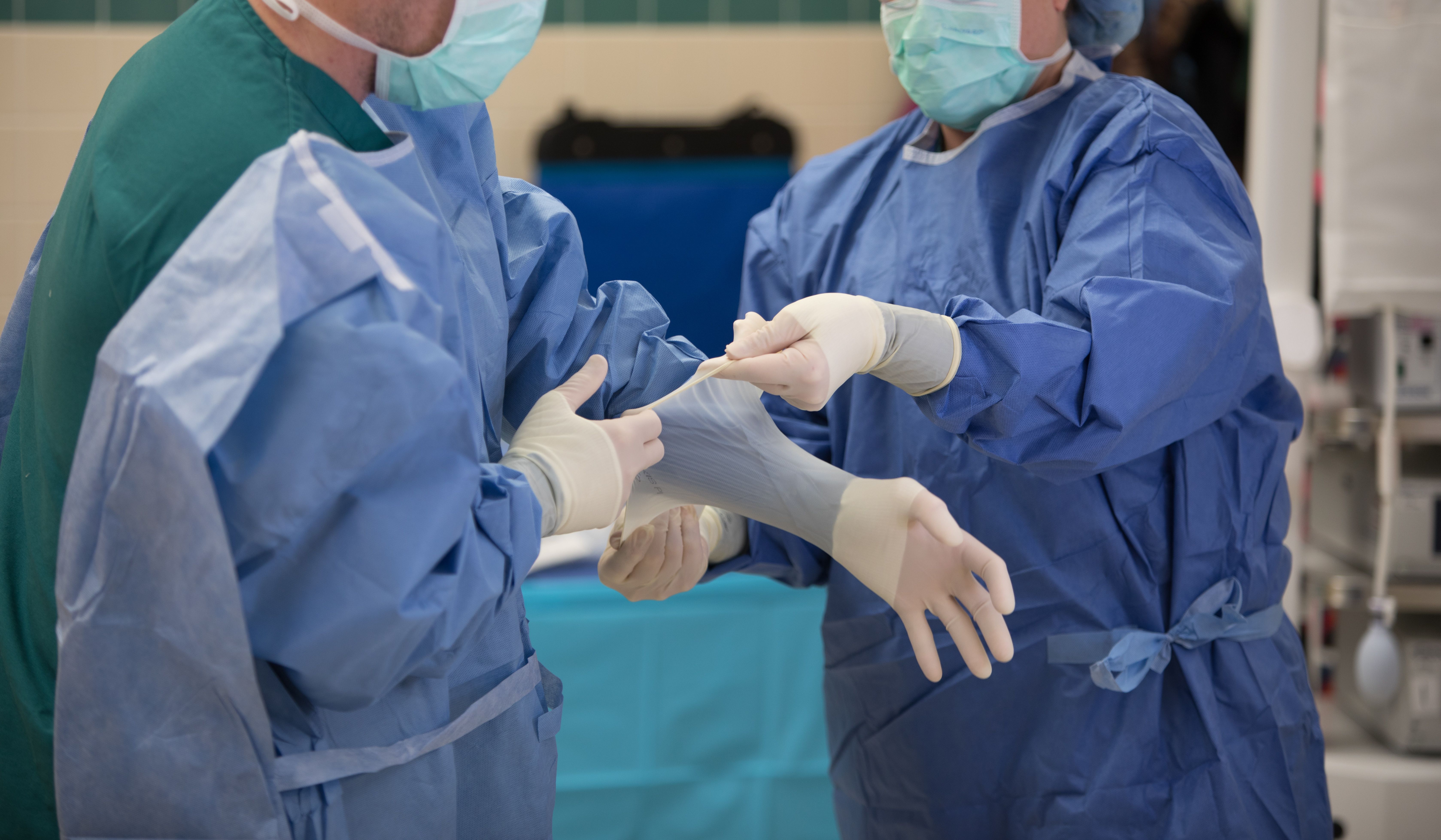- Case-Based Roundtable
- General Dermatology
- Eczema
- Chronic Hand Eczema
- Alopecia
- Aesthetics
- Vitiligo
- COVID-19
- Actinic Keratosis
- Precision Medicine and Biologics
- Rare Disease
- Wound Care
- Rosacea
- Psoriasis
- Psoriatic Arthritis
- Atopic Dermatitis
- Melasma
- NP and PA
- Skin Cancer
- Hidradenitis Suppurativa
- Drug Watch
- Pigmentary Disorders
- Acne
- Pediatric Dermatology
- Practice Management
- Prurigo Nodularis
- Buy-and-Bill
News
Article
Dermatology Times
In Health Care Professionals, Skin Reactions Can Be Traced Back to PPE Use
Author(s):
Researchers found that use of personal protective equipment could be associated with skin problems; however, protective applications reduced these skin-related problems.
According to a research article1 recently published in Nursing in Critical Care, use of personal protective equipment (PPE) in intensive care units contributed to a wide range of skin-related problems amid the COVID-19 pandemic.
Rick Lohre/AdobeStock

Researchers sought to identify common skin problems caused by the use of PPE, citing prior studies indicative of skin problems caused by wearing goggles, gowns, or masks in health care settings. They noted that these problems may have been exacerbated by the length of time PPE was worn in order to prevent and control infection.
They first began by referencing meta-analyses outlining the most common skin problems associated with the use of the most common forms of PPE. In the use of face shields, goggles, and N95 masks, common skin concerns included acne, allergic dermatitis, dry skin, pressure sores, rash, desquamation, dryness, tightness, and erythema. Glove-wearing could be attributed to allergic contact dermatitis, acne, chapped skin, eczema, seborrheic dermatitis, skin discoloration, and skin thickening. When using gowns or coveralls, health care professionals face acne, dry skin, pruritus, and rash.
In order toidentify the skin concerns specific to 3 COVID-19 intensive care units in a single study hospitallocated in Altındağ, Turkey, researchers conducted a cross-sectional survey. Intensive care unit workers were asked to answer the following questions:
- What was the proportion of the development of skin problems related to using PPE?
- Did the development of skin problems related to using PPE differ according to the socio-demographic characteristics of the nurses?
- Did the development of skin problems related to using PPE differ according to the working conditions in the COVID-19 ICU?
- Did the development of skin problems related to using PPE differ according to protective applications to prevent skin problems?
Retrospective data was collected from 82 intensive care nurses who had worked between December 2021 and June 2022. These nurses were required to actively provide care in COVID-19 intensive care units while using Level 3 PPEs, including bonnets, boot/shoe covers, face shields, gloves (elbow-length), goggles, gowns/coveralls, and medical masks. They completed the online survey and sent in optional photographs of skin problems or conditions related to PPE wear.
Of these participants, 90.24% reported the presence of any skin-related problem caused by PPE use. The 3 most common skin problems associated with PPE wear included an N95 mask (in 89% of respondents), goggles (in 79.3% of respondents), and face shields (in 34.1% of respondents). The 4 most common skin problems included acne, pressure sores, regional pain, and skin reactions, which included allergic contact dermatitis and contact urticaria.
Pressure sores were the most common skin concern associated with use of goggles, N95 masks, bonnets, gloves, boot/shoe covers, and gowns/coveralls. Use of face shields was most frequently associated with regional pain. Approximately 90.24% of nurses reported experiencing at least 2 or more skin problems due to PPE use.
Researchers also evaluated protective applications of certain aids to prevent skin problems associated with PPE use. The most common forms of protection included pressure reducing surfaces, transparent dressings, thin hydrocolloid dressings, and protective pomades. In fact, some correlations could be made between protective applications and skin concerns.
The proportion of nurses who reported experiencing pressure sores was significantly lower in instances where protective applications were used as opposed to those who did not make any protective applications prior to or during PPE use. Skin reactions were also lower among nurses taking protective applications when wearing gloves and boot/shoe covers. Greater prevalence of skin problems was associated with nurses wearing bonnets and face shields who did not take protective application.
However, protective application also led to increased skin concerns in some cases. For example, an increase in regional pain could be linearly associated with an increase in protective applications among those wearing N95 masks.
“The results of this study provide preliminary data for modifying or developing PPEs that minimize harm,” according to Atlin et al. “In this current study, each of the Level 3 PPEs used in the pandemic caused skin problems. Nine of 10 nurses had skin problems associated with PPE. In preparation for future pandemics, it would likely be beneficial to design a work program that does reduce the use of PPE in clinics to prevent skin problems. In addition, effective protective applications can be a temporary solution to prevent skin problems. However, there is a need for the development of PPE that does not cause skin problems for a definitive solution.”
Reference
- Altin L, Akbiyik A. Skin problems associated with using of personal protective equipment in COVID‐19 intensive care units. Nurs Crit Care. Published online July 26, 2023. doi:10.1111/nicc.12956






